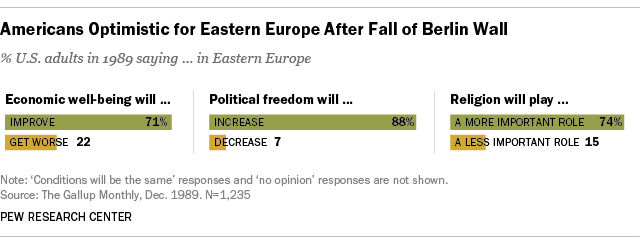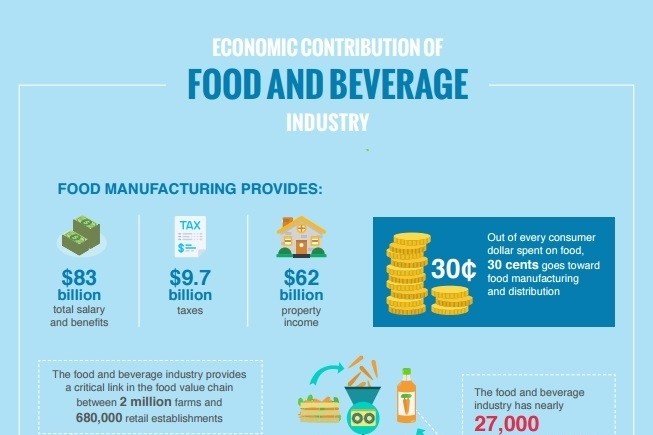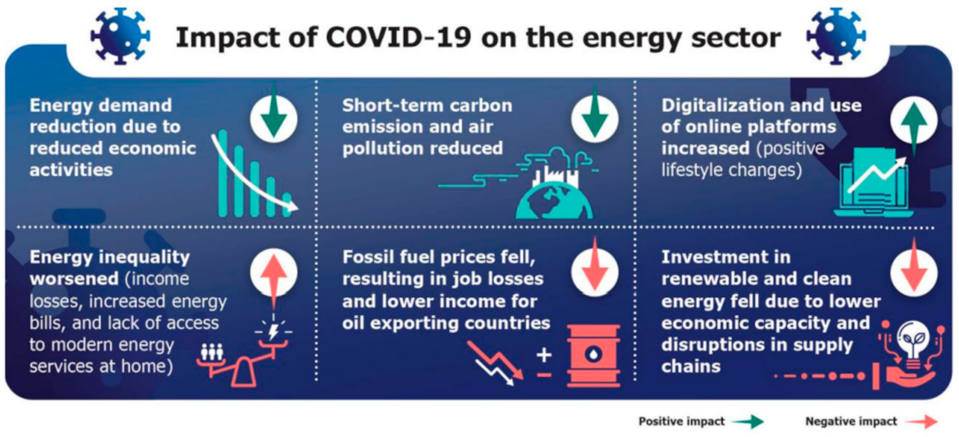Introduction
The fall of the Berlin Wall on November 9, 1989, was a historic event that not only signaled the end of the Cold War but also had profound economic implications for Germany and the world. The reunification of East and West Germany brought about significant economic transformations, and its ripple effects extended far beyond the nation’s borders. In this article, we will delve into the economic impact of the Berlin Wall’s fall, explore the process of German reunification, and analyze its global consequences.
The fall of the Berlin Wall on that fateful day in November 1989 was an event that transcended the realm of politics and geopolitics. While it indeed marked the symbolic end of the Cold War, its economic ramifications were just as seismic, reshaping Germany’s economic landscape and reverberating across the global stage.
Economic and Political Convergence: The reunification of East and West Germany was not just a reunification of people and territory; it was also a merger of two vastly different economic systems. The Western market-oriented economy collided with the state-controlled planned economy of the East. This convergence, while challenging, brought with it the promise of a unified, dynamic, and competitive German economy.
Economic Disparities: East Germany, known as the German Democratic Republic (GDR), had a struggling economy plagued by inefficiencies, obsolete industries, and a lack of competitiveness. West Germany, on the other hand, was an economic powerhouse with a highly developed industrial base. Bridging the economic disparities between these two regions became a monumental task.
Financial Aid and Investment: West Germany responded with unprecedented financial aid and investment in the East. Massive sums were poured into infrastructure projects, modernizing factories, and improving living conditions. This financial commitment was not only aimed at addressing immediate economic challenges but also at fostering long-term growth and development in the former GDR.
Social Transformation: The economic reunification brought about significant social changes. Eastern Germany saw a wave of privatization, and the job market underwent a profound shift. While this period of adjustment was marked by economic uncertainty and job losses, it ultimately led to a more dynamic and flexible labor market.
Global Economic Integration: The reunification had far-reaching implications for Germany’s role in the global economy. The country’s economic might increased significantly, positioning it as a major player in international trade and investment. German companies expanded their global presence, exporting goods and services to markets around the world.
European Economic Unity: The economic reunification of Germany was closely tied to the broader European context. It coincided with the ongoing process of European integration. Germany’s commitment to the European project, combined with its economic strength, helped drive forward the creation of the European Union and the adoption of the Euro as a common currency.
Global Trade and Investment: A united Germany became an even more attractive destination for foreign direct investment (FDI). The country’s expanded market and well-developed infrastructure made it an ideal location for international businesses looking to access both European and global markets.
Technological Advancements: Germany’s reunification also accelerated technological advancements. The merging of East and West brought together different areas of expertise and knowledge, spurring innovation and research. This scientific progress had a ripple effect, influencing global technological trends.
Geopolitical Implications: Beyond economics, the reunification had geopolitical implications. It played a pivotal role in the dissolution of the Eastern Bloc and the reshaping of the global political order. The end of the Cold War and the reunification of Germany were central elements in this historic transformation.
In conclusion, the fall of the Berlin Wall and the subsequent reunification of Germany were events of immense historical significance, both politically and economically. The economic challenges and opportunities that emerged during this period not only reshaped Germany but also left an indelible mark on the global economic landscape. The story of German reunification is a testament to the power of determination, cooperation, and adaptability in the face of economic and political change.
For a comprehensive look at this subject, we invite you to read more on this dedicated page: Fall of Berlin Wall: How 1989 reshaped the modern world – BBC News
A Catalyst for Economic Change
The Berlin Wall, erected in 1961, had been a symbol of the division between East and West Germany. Its sudden fall unleashed a wave of political and economic transformations:
A Catalyst for Economic Change, The Berlin Wall, erected in 1961, had been a symbol of the division between East and West Germany. Its sudden fall unleashed a wave of political and economic transformations that not only reunited a divided nation but also had profound implications for Europe and the global economy.
The dismantling of the Berlin Wall marked the end of the Cold War and the beginning of a new era in Europe. With the reunification of East and West Germany, a vast population previously isolated from the capitalist West gained access to Western markets, goods, and technologies. This presented a unique opportunity for economic growth and development.
The process of integrating the East German economy into the West German one, known as “Die Wende” or “the turning point,” was a monumental task. It required massive investments in infrastructure, modernization of industries, and job creation in the East. West German companies expanded into the East, creating new markets and industries. This influx of investment and economic activity resulted in significant economic growth and opportunities.
Moreover, the fall of the Berlin Wall had broader implications for Europe as a whole. It accelerated the momentum toward European integration. As Germany became a united nation within a united Europe, the prospect of a stronger and more integrated Germany was embraced by European leaders as a way to ensure peace and stability on the continent. This paved the way for the creation of the Eurozone and the expansion of the European Union, setting the stage for deeper economic and political cooperation among European nations.
The economic consequences of the Berlin Wall’s fall reached beyond Europe’s borders. Germany’s reunification and subsequent economic success served as a model for other countries undergoing political and economic transitions, particularly in Eastern Europe and the former Soviet bloc. It showcased the potential for economic growth through market-oriented reforms and international integration.
In conclusion, the fall of the Berlin Wall was not only a historic political event but also a catalyst for profound economic change. It reshaped Germany’s economy, accelerated European integration, and served as an inspiration for other nations striving for economic transformation and integration into the global economy. The removal of the Wall, once a symbol of division, became a symbol of hope and economic opportunity for millions.
Should you desire more in-depth information, it’s available for your perusal on this page: The Berlin Wall Falls and USSR Dissolves – Short History …

The reunification of East and West Germany was a monumental task. East Germany’s economy was lagging behind, burdened by outdated industries and infrastructure. The process of integrating the two regions required massive financial and administrative efforts.
The reunification of East and West Germany was an immense undertaking, often described as one of the most significant challenges in post-war European history. The stark economic disparities between the two regions added complexity to the already monumental task.
East Germany’s economy, at the time of reunification, was characterized by outdated industries, obsolete technology, and crumbling infrastructure. Decades of centralized planning in a socialist system had left the region with inefficient production processes and uncompetitive industries. The rapid shift to a market-oriented economy presented a formidable challenge, as it required not only revitalizing existing enterprises but also dismantling state-owned monopolies.
One of the immediate concerns was the high level of unemployment in East Germany, resulting from the closure and restructuring of many unviable businesses. The social implications of this transition were profound, as individuals accustomed to job security and state-provided benefits suddenly faced uncertainty.
To address these challenges, massive financial and administrative efforts were indispensable. West Germany, with its robust economy, played a crucial role in providing the necessary financial support. Enormous investments were made in modernizing East Germany’s infrastructure, from roads and railways to telecommunications and energy systems. The aim was to create an environment conducive to economic growth and private sector development.
Administratively, the reunification process involved harmonizing legal systems, regulations, and institutions. This included everything from property rights and contract law to tax codes and social welfare programs. The goal was to create a level playing field for businesses and individuals in both regions and to ensure that the benefits of reunification were distributed as fairly as possible.
Despite the many challenges, the reunification process also brought about opportunities. The transfer of knowledge and expertise from West to East Germany facilitated the modernization of industries and the development of new economic sectors. Over time, East Germany began to harness its human capital and innovative potential, transforming itself into a competitive and dynamic part of the unified German economy.
In retrospect, the reunification of East and West Germany stands as a testament to the power of determination, collaboration, and long-term vision. It demonstrates that even in the face of daunting economic and administrative challenges, a nation can overcome adversity and emerge stronger, more united, and better prepared to face the future.
Should you desire more in-depth information, it’s available for your perusal on this page: Fall of Communism in Eastern Europe, 1989

West Germany provided substantial financial aid to East Germany as a gesture of solidarity. This wealth transfer aimed to jumpstart the struggling East German economy, bridge economic disparities, and bring the eastern region up to par with the west. Investments were made in infrastructure, industry, and social services.
The financial aid extended from West Germany to East Germany following the fall of the Berlin Wall was not just an act of solidarity but a profound commitment to reunification and addressing the stark economic disparities that had emerged during decades of separation.
To jumpstart the struggling East German economy, West Germany embarked on an ambitious program of investments that touched nearly every aspect of life in the former East. Infrastructure development became a top priority, with the construction of highways, railways, and modernized utilities aimed at not only improving connectivity but also laying the groundwork for future economic growth.
The industrial sector also received substantial attention. Outdated factories were modernized, and new industrial centers were established, injecting life into East Germany’s manufacturing capabilities. This revitalization of industry not only created jobs but also facilitated the integration of East German products into broader national and international markets.
Investments in social services were equally crucial. The goal was not only to boost economic prosperity but also to ensure that citizens in the east enjoyed a comparable standard of living to their western counterparts. Healthcare, education, and housing were areas that saw significant improvements, creating a more equitable society.
Perhaps one of the most noteworthy initiatives was the “Treuhandanstalt,” the agency responsible for privatizing state-owned enterprises in East Germany. While the privatization process was complex and challenging, it paved the way for market-oriented economic reforms and the integration of the East German economy into the broader European and global economic systems.
The wealth transfer from West to East was not without its challenges and controversies. The abrupt shift from a centrally planned to a market-oriented economy posed difficulties, including job losses and economic uncertainty. Nevertheless, it was a critical step toward reunification and fostering economic growth in the east.
Today, the impact of these investments is evident in a more unified and economically robust Germany. The transformation of East Germany into a vibrant and thriving region is a testament to the power of determined efforts to bridge economic disparities, promote unity, and create a brighter future for all citizens. The process serves as an inspiring example of how nations can come together to rebuild and reshape their destinies.
For a comprehensive look at this subject, we invite you to read more on this dedicated page: Consequences of the Collapse of the Soviet Union | Norwich …

The reunification resulted in a single, unified market of over 80 million people, making it the largest economy in Europe. This expansion created new opportunities for domestic and international businesses to access a larger consumer base.
The reunification of Germany in 1990 marked a pivotal moment in European history, with profound economic implications that extended far beyond the nation’s borders. The creation of a single, unified market of over 80 million people not only solidified Germany’s position as the largest economy in Europe but also ushered in a new era of economic growth and opportunity for both domestic and international businesses.
Market Expansion: The reunification effectively doubled the size of the German market, offering an immense consumer base for businesses across various sectors. This expansion presented a wealth of opportunities for companies to tap into a larger pool of potential customers, driving increased sales and revenue.
Foreign Investment: The reunified Germany became an attractive destination for foreign investment. The influx of capital from abroad fueled the development of infrastructure, technology, and manufacturing capabilities. International businesses recognized Germany as a gateway to the broader European market and established a strong presence within its borders.
Stimulated Competition: The reunification intensified competition within Germany. As East German industries underwent privatization and restructuring, they had to adapt to compete with their more established Western counterparts. This competitive environment led to innovation, efficiency improvements, and higher product quality across industries.
Job Creation: The economic growth resulting from reunification led to significant job creation. As new businesses emerged and existing ones expanded, millions of jobs were generated, reducing unemployment and improving living standards in both East and West Germany. The economic boom had a positive impact on the nation’s overall prosperity.
Infrastructure Development: The reunification spurred substantial infrastructure development in the former East Germany. Investments in roads, railways, and utilities improved connectivity and logistics, facilitating the movement of goods and services. This infrastructure development had positive spill-over effects on neighboring European countries, enhancing regional trade.
Enhanced Economic Diplomacy: Germany’s reunification strengthened its role in economic diplomacy and international trade agreements. The nation’s economic clout and position as a key player in the European Union allowed it to advocate for policies that promoted open markets and trade liberalization, benefiting not only German businesses but also global commerce.
Cultural Exchange: The reunification also led to cultural exchange and mutual learning between East and West Germany. This blending of cultures and ideas fostered creativity and innovation, contributing to the nation’s economic vibrancy.
In conclusion, the reunification of Germany created an economic powerhouse at the heart of Europe. The resulting unified market, characterized by increased consumer demand, foreign investment, and job creation, has had a profound and lasting impact on the nation’s economic landscape. It has also played a pivotal role in shaping economic relations within Europe and the global economy. Germany’s reunification stands as a testament to the transformative power of unity and the economic opportunities that can arise from overcoming historical divides.
To expand your knowledge on this subject, make sure to read on at this location: South Korea should prepare for reunification | East Asia Forum

Germany’s reunification opened up increased international trade opportunities. A united Germany became a more prominent player in the global marketplace, facilitating trade relationships with nations worldwide.
Germany’s reunification was a pivotal moment that not only brought together East and West but also unlocked a new era of international trade opportunities. A united Germany emerged as a prominent and influential player in the global marketplace, fundamentally reshaping its trade relationships with nations around the world.
One of the most immediate effects of reunification was the expansion of Germany’s market. With the removal of the Berlin Wall and the dismantling of trade barriers between East and West Germany, the country suddenly had access to a larger domestic market. This allowed German businesses to scale up their operations, diversify their product offerings, and increase their competitiveness on a global scale.
Moreover, the reunified Germany leveraged its newfound economic strength to deepen trade ties with nations across the globe. Its reputation for precision engineering, high-quality manufacturing, and innovation made German products highly sought after in international markets. German exports, which range from automobiles and machinery to chemicals and electronics, found their way into homes and industries in virtually every corner of the world.
Germany’s role as an export powerhouse was further solidified by its commitment to quality and reliability, symbolized by the famous “Made in Germany” label. This mark signified not only top-tier craftsmanship but also adherence to rigorous quality standards. As a result, German goods enjoyed a premium status in global markets, fostering trust among consumers and businesses alike.
Additionally, Germany’s reunification facilitated diplomatic and economic ties with countries in Eastern Europe and the former Soviet Union. This newfound connectivity opened doors to emerging markets and investment opportunities, strengthening Germany’s position as a global trade hub.
Furthermore, Germany’s reunification underscored its commitment to European integration and cooperation. It played a central role in the formation of the European Single Market, which further eased trade barriers within the European Union and enhanced economic cooperation with neighboring nations.
In conclusion, Germany’s reunification not only united a divided nation but also transformed it into a global trade powerhouse. Its ability to seize international trade opportunities, diversify its export markets, and maintain a reputation for excellence has made Germany an indispensable player in the global marketplace. The reunification’s enduring legacy is one of economic strength, international influence, and a commitment to forging strong trade relationships with nations worldwide.
If you’d like to dive deeper into this subject, there’s more to discover on this page: The Berlin Wall Falls and USSR Dissolves – Short History …

The economic consequences of German reunification influenced the broader European landscape. The prospect of a united Germany accelerated the drive toward European integration, leading to the creation of the Eurozone and the European Union as we know them today.
The economic consequences of German reunification in the early 1990s had a profound impact not only on Germany but also on the broader European landscape. This transformative event triggered a chain reaction of economic and political developments that reshaped the course of European integration and paved the way for the creation of the Eurozone and the European Union (EU) as we know them today.
Economic Challenges and Solidarity: German reunification was an ambitious endeavor that came with substantial economic challenges. The integration of the East German economy into the West posed formidable economic burdens for Germany. To address these challenges, Germany received substantial financial assistance from its European neighbors. This spirit of solidarity and financial support laid the groundwork for a deeper sense of economic cooperation within the European community.
Economic Integration and Trade: As Germany embarked on the monumental task of reunification, it became increasingly apparent that a united Germany would play a pivotal role in the European economy. This realization accelerated the push for economic integration within Europe. The creation of the Single European Act in 1986 and the Maastricht Treaty in 1992 were key milestones on the path to further economic cooperation. The removal of trade barriers, the introduction of a single European market, and the strengthening of the European Community’s economic pillars all aimed to enhance economic unity and competitiveness.
Eurozone Formation: The prospect of a united Germany heightened the urgency of creating a common European currency. The result was the introduction of the euro in 1999, which later led to the establishment of the Eurozone as a group of EU member states sharing the euro as their official currency. The euro not only facilitated cross-border trade but also symbolized a deepening economic and monetary union among European nations.
EU Expansion: German reunification served as a catalyst for the expansion of the European Union. The end of the Cold War opened the door for the inclusion of Central and Eastern European countries into the EU. The reunified Germany played a pivotal role in advocating for the enlargement of the EU, promoting democracy, and fostering economic development in the newly admitted member states.
Political Cooperation: Beyond the economic realm, the fall of the Berlin Wall and German reunification demonstrated the potential for peaceful political change and cooperation in Europe. The willingness of European nations to work together to manage the complex reunification process underscored the value of diplomacy and collaboration in a post-Cold War era.
In conclusion, the economic consequences of German reunification had far-reaching effects on European integration. The unity of Germany served as a catalyst for deeper economic cooperation, the creation of the Eurozone, and the expansion of the European Union. It was a pivotal moment that reshaped the European political and economic landscape, fostering a sense of solidarity and collaboration among nations that endures to this day.
Should you desire more in-depth information, it’s available for your perusal on this page: After the Berlin Wall: Europe’s Struggle to Overcome Its Divisions

The reunification of Germany had several significant global consequences:
The reunification of Germany had several significant global consequences, each of which contributed to reshaping the geopolitical, economic, and social landscape on a global scale:
Geopolitical Realignment: German reunification marked the culmination of the peaceful end of the Cold War and the dismantling of the Iron Curtain. This geopolitical realignment had profound implications for the global balance of power, as it heralded the end of the bipolar world order dominated by the United States and the Soviet Union. It paved the way for a more multipolar world, where new actors and alliances would emerge.
Economic Integration: Germany’s reunification facilitated the integration of Eastern and Central European countries into the global economy. The opening of markets in the former East Germany created new opportunities for trade and investment, encouraging economic liberalization in neighboring countries. This economic integration was a driving force behind the expansion of the European Union (EU) and the North Atlantic Treaty Organization (NATO) into Eastern Europe.
Global Economic Impact: The integration of the East German economy into the larger West German one presented both opportunities and challenges. Germany’s economic strength and stability played a crucial role in supporting the newly reunified nation. However, the immense cost of this process, including infrastructure upgrades and social welfare programs in the East, impacted Germany’s fiscal policies and had implications for the European and global economies.
Diplomacy and Peace: German reunification showcased the effectiveness of diplomatic negotiations in resolving complex international issues peacefully. The willingness of Western powers, especially the United States, to support and accept reunification through diplomatic means sent a message of cooperation and reconciliation, setting a precedent for peaceful conflict resolution in other parts of the world.
Expansion of European Institutions: The reunification of Germany influenced the expansion of European institutions like the EU and NATO. The inclusion of former Eastern Bloc countries in these organizations strengthened European unity and contributed to the stabilization and democratization of Eastern Europe. It also encouraged cooperation and partnerships with non-European powers.
Global Inspiration: Germany’s reunification served as an inspiration for other countries undergoing political and social transformations. It demonstrated that peaceful reunification and transition to democracy were achievable, even in the most challenging circumstances. This inspiration contributed to the wave of democratic movements and the dismantling of authoritarian regimes in various regions.
In summary, the reunification of Germany was a pivotal moment in history with profound global consequences. It not only transformed the geopolitical landscape but also influenced economic integration, diplomacy, and international cooperation. Germany’s journey from division to reunification continues to serve as a symbol of hope, cooperation, and peaceful change in an ever-changing world.
Should you desire more in-depth information, it’s available for your perusal on this page: How West and East German views compare 30 years after fall of …

A united Germany emerged as an economic powerhouse, a role it continues to play today. Its robust economy, driven by technological innovation and a skilled workforce, significantly influences global trade and investment.
A united Germany emerged as an economic powerhouse, a role it continues to play today with unwavering influence and resilience. Its robust economy, characterized by a harmonious blend of technological innovation and a highly skilled workforce, significantly impacts global trade, investment, and economic dynamics. Here’s a closer look at the enduring influence of Germany’s economic prowess:
Export Juggernaut: Germany’s export-oriented model has propelled it to the top echelons of global trade. Its products, ranging from precision machinery to high-quality automobiles, are sought after worldwide. Germany’s commitment to quality and innovation has solidified its reputation as a reliable trade partner.
Manufacturing Excellence: The “Made in Germany” label symbolizes precision, quality, and craftsmanship. German manufacturers are renowned for their commitment to excellence, with industries such as automotive, engineering, and chemicals setting high standards for global production.
Technological Innovation: Germany is at the forefront of technological innovation. Its investments in research and development have led to breakthroughs in renewable energy, automation, artificial intelligence, and Industry 4.0. These advancements not only boost the nation’s competitiveness but also influence global technological trends.
Skilled Workforce: Germany’s education system emphasizes vocational training and apprenticeships, producing a highly skilled and adaptable workforce. This resource is a cornerstone of the nation’s economic success, supporting innovation and high-quality production.
Innovation Ecosystem: Germany fosters a vibrant innovation ecosystem with world-class research institutions, startups, and a culture of entrepreneurship. It encourages collaboration between academia and industry, driving continuous innovation.
Economic Resilience: Germany’s diversified economy and strong fiscal discipline have contributed to its economic resilience. It weathered global financial crises and economic downturns better than many other nations, showcasing its stability and adaptability.
Global Investment Hub: Germany is not only a top exporter but also a magnet for foreign direct investment (FDI). Multinational corporations are drawn to its stable business environment, skilled workforce, and access to the European market.
Global Supply Chain Hub: Germany’s central location in Europe and its efficient infrastructure make it a natural hub for global supply chains. Its logistical prowess ensures the smooth movement of goods and materials across borders.
Financial Sector: Frankfurt, Germany’s financial capital, is a vital player in the global financial system. It hosts the European Central Bank (ECB) and is a hub for international finance, further solidifying Germany’s influence in global economics.
Environmental Leadership: Germany’s commitment to sustainability and environmental responsibility is reflected in its green technologies and energy transition efforts. It sets an example for nations striving to balance economic growth with ecological stewardship.
Economic Diplomacy: Germany actively engages in economic diplomacy, advocating for open markets, free trade, and a rules-based international trading system. It participates in international organizations, shaping global economic policies and trade agreements.
Job Creation: Germany’s economic vitality translates into job creation. The nation’s strong labor market and low unemployment rate contribute to social stability and prosperity.
In conclusion, Germany’s position as an economic powerhouse is the result of a harmonious blend of innovation, a skilled workforce, and a commitment to excellence. Its enduring influence on global trade, investment, and technological progress underscores the nation’s resilience and adaptability in an ever-changing economic landscape. As Germany continues to lead in various sectors, its contributions to the global economy will remain pivotal in shaping the future of international trade and economic development.
For additional details, consider exploring the related content available here After The Berlin Wall

Germany’s central location within Europe positions it as a crucial hub for global trade. The country’s extensive transportation infrastructure and export-oriented industries have contributed to the efficient movement of goods and services worldwide.
Germany’s central location within Europe is undeniably a cornerstone of its economic prowess and global influence. Situated at the heart of the continent, Germany serves as a vital hub for global trade, leveraging its exceptional transportation infrastructure and export-oriented industries to facilitate the seamless flow of goods and services across the world.
Strategic Geographical Advantage: Germany’s geographical location makes it a natural crossroads for international trade. It provides easy access to neighboring European markets while also serving as a gateway to both eastern and western regions, positioning itself as an ideal logistical nexus for global commerce.
Efficient Transportation Network: Germany boasts one of the world’s most efficient transportation networks. Its extensive road and rail systems, as well as its inland waterways, facilitate the movement of goods not only within Europe but also to destinations worldwide. The country’s ports, such as Hamburg and Bremen, are key maritime gateways to Europe.
Logistics and Distribution: Germany’s logistical capabilities are renowned for their precision and reliability. This logistical expertise extends to distribution centers and hubs strategically located throughout the country, ensuring efficient supply chain management for global corporations.
Export-Oriented Industries: German industries, particularly manufacturing and machinery, are export powerhouses. These sectors produce high-quality products that are in high demand globally. Their competitiveness and innovation have solidified Germany’s reputation as a dependable source of world-class goods.
Global Trade Partnerships: Germany’s robust trade partnerships and agreements, both within the European Union and beyond, enhance its position as a global trade hub. These partnerships facilitate the smooth exchange of goods and services, fostering economic cooperation and stability.
Economic Stability: Germany’s commitment to economic stability and sound fiscal policies contributes to its attractiveness as a global trading partner. Its stable economy and currency, the Euro, provide a secure environment for international business transactions.
Job Creation: The country’s role as a trade hub generates millions of jobs, directly and indirectly, in areas like transportation, logistics, and export-oriented industries. This employment has a positive impact not only on Germany’s workforce but also on those in partner countries.
Supply Chain Integration: German companies often play central roles in global supply chains. Their participation and investments in international production networks strengthen the interconnection of economies, enhancing efficiency and driving global economic growth.
Innovation and Technology Transfer: Germany’s export-driven approach facilitates the transfer of advanced technologies to other nations. This technology transfer contributes to the global spread of knowledge and innovation, further propelling international economic development.
In essence, Germany’s central location, exceptional transportation infrastructure, and export-oriented industries are key factors that underpin its role as a linchpin in the global trade landscape. Its ability to efficiently move goods and services across borders not only benefits its own economy but also contributes significantly to the interconnectedness and economic well-being of nations worldwide. As global trade continues to evolve, Germany’s position as a vital trade hub is expected to endure, cementing its status as a major player in the global economy.
To expand your knowledge on this subject, make sure to read on at this location: Why was the Berlin Wall Built? | Gale Archives Explored

German reunification played a pivotal role in shaping the economic stability of Europe. Its commitment to fiscal responsibility and monetary stability within the Eurozone has been instrumental in maintaining the strength of the Euro and the overall stability of the European economy.
German reunification played a pivotal role in shaping not only the economic stability of Europe but also the broader landscape of European integration. The commitment of Germany to fiscal responsibility and monetary stability within the Eurozone has been a linchpin in maintaining the strength of the Euro and bolstering the overall stability of the European economy.
Economic Integration: German reunification was a testament to Europe’s aspiration for unity. It served as a model for the peaceful reunification of a divided continent. This spirit of cooperation and unity extended to the economic realm, where Germany played a central role in the formation of the Eurozone.
Monetary Policy Leadership: Germany’s commitment to sound monetary policy has been a cornerstone of the Eurozone’s success. The Bundesbank’s legacy of price stability and low inflation became the blueprint for the European Central Bank (ECB). Germany’s influence within the ECB has helped maintain the Euro’s credibility as a stable and trusted currency.
Fiscal Responsibility: Germany’s emphasis on fiscal responsibility has been instrumental in maintaining the Euro’s strength. Its adherence to the Stability and Growth Pact and its insistence on responsible budgeting have set high standards for other Eurozone members, contributing to the overall fiscal discipline of the currency union.
Economic Engine: Germany’s economic strength has also been a driving force in the European economy. Its export-oriented model and competitive industries have fueled economic growth not only domestically but also across the Eurozone. The success of the German economy has created opportunities for trade and investment within the Eurozone, benefiting all member states.
Crisis Management: During times of economic crisis within the Eurozone, Germany has often played a crucial role in crafting and supporting bailout packages and financial stability mechanisms. Its willingness to shoulder a significant portion of the financial burden has helped stabilize vulnerable economies and prevent a wider financial meltdown.
Political Stabilization: Beyond economics, German reunification contributed to political stabilization in Europe. A united Germany became a key player in European diplomacy, contributing to peace and cooperation in the region.
Challenges and Solidarity: While German reunification and its economic policies have brought significant benefits, they have also posed challenges. Economic disparities among Eurozone members and the need for closer fiscal integration continue to be subjects of debate. However, Germany’s willingness to engage in discussions and compromises underscores its commitment to European unity and stability.
In conclusion, the economic stability of Europe owes much to Germany’s role in reunification and its commitment to fiscal responsibility and monetary stability within the Eurozone. The country’s influence has been a driving force in ensuring that the European project thrives, demonstrating the power of cooperation and responsible governance in maintaining peace and prosperity on the continent.
Should you desire more in-depth information, it’s available for your perusal on this page: Brookings experts’ reading list on the fall of the Berlin Wall and the …

Germany’s reunification transformed it into a magnet for foreign direct investment (FDI). International businesses flocked to Germany to take advantage of its expanded market and skilled labor force, further solidifying its position in the global economy.
Germany’s reunification in the wake of the fall of the Berlin Wall not only united a nation but also triggered a remarkable influx of foreign direct investment (FDI). This unprecedented wave of international capital and business interest reshaped the German economy and reinforced its role as a global economic powerhouse. Here are several significant aspects of this transformation:
FDI Boom: The reunification of Germany was a clear signal to international investors that a vast and unified market had emerged in the heart of Europe. This prospect led to a surge in foreign direct investment as companies sought to establish a presence in this newly expanded economic frontier.
Gateway to Europe: Germany’s strategic location at the crossroads of Western and Eastern Europe made it an ideal gateway for companies aiming to access both established Western European markets and the emerging markets of Eastern Europe. It became a pivotal hub for businesses looking to expand their European operations.
Skilled Labor Force: Germany’s reunification brought with it a skilled and educated labor force from East Germany. This workforce was a valuable asset, attracting companies in need of talent to drive their operations. The availability of skilled workers enhanced Germany’s appeal to foreign investors.
Infrastructure Development: To bridge the economic disparities between East and West Germany, significant investments were made in infrastructure development. This not only facilitated business operations within the country but also improved transportation links to neighboring European countries.
Technology Transfer: The reunification facilitated the transfer of technology and know-how from Western to Eastern Germany. This exchange of expertise boosted innovation and productivity in both regions, making Germany even more attractive to technology-driven industries.
Industry Diversification: The influx of FDI contributed to the diversification of Germany’s industries. Companies from various sectors, including manufacturing, services, technology, and finance, established a presence in the country, reducing its reliance on a single industry.
Economic Growth: FDI played a pivotal role in driving economic growth in Germany. New investments led to job creation, increased industrial output, and enhanced competitiveness, contributing to Germany’s strong economic performance.
Global Competitiveness: With FDI, Germany’s industries became even more competitive on the global stage. German products and services benefited from increased international exposure and a broader customer base.
European Integration: Germany leveraged its newfound economic strength and experience in reunification to advocate for European integration, including the expansion of the European Union (EU) to include Eastern European countries. This contributed to the stability and economic development of the wider region.
Global Business Hub: The surge in FDI transformed Germany into a global business hub. Multinational corporations headquartered their European operations in Germany, and it became a focal point for international trade and investment.
In conclusion, Germany’s reunification acted as a catalyst for foreign direct investment, fundamentally reshaping its economic landscape and global significance. The influx of capital, talent, and expertise strengthened Germany’s position as a magnet for international business and underscored the country’s role as a cornerstone of the global economy. The lessons learned from this period continue to inform investment strategies and highlight the profound impact that political and economic reunification can have on a nation and the world.
For additional details, consider exploring the related content available here The Impacts of Large Research Infrastructures on Economic …

The reunification of Germany altered geopolitical dynamics, contributing to the end of the Cold War and the reconfiguration of global power structures. It marked the end of an era and the beginning of a new world order.
The reunification of Germany, in the wake of the fall of the Berlin Wall, was a pivotal moment that reshaped the geopolitical landscape of the world. It played a central role in the following ways:
End of the Cold War: Germany’s reunification served as a symbolic and practical conclusion to the Cold War. The division of Germany had been a visible manifestation of the ideological conflict between the United States and the Soviet Union. The reunification signaled an end to this decades-long struggle, symbolizing the triumph of democratic values and market-oriented economies over communism.
Soviet Union’s Retreat: The reunification process coincided with the decline of the Soviet Union. As East Germany sought reunification with the West, the Soviet leadership, under Mikhail Gorbachev, adopted a more conciliatory stance, signaling a retreat from the Soviet Bloc’s traditional sphere of influence in Eastern Europe. This shift contributed to the end of the Cold War tensions.
NATO Expansion: Germany’s reunification led to its continued membership in NATO (North Atlantic Treaty Organization). This decision was significant as it expanded NATO’s reach into Eastern Europe and signaled a broader geopolitical realignment. The alliance, once focused primarily on countering the Soviet threat, transformed into a security umbrella for a wider group of European nations.
European Integration: The reunification also played a crucial role in the broader European context. Germany’s commitment to European integration, combined with its economic strength, helped drive forward the creation of the European Union (EU) and the adoption of the Euro as a common currency. The EU’s expansion to include former Eastern Bloc countries further solidified the shift towards a more unified and integrated Europe.
Shift in Global Power Structures: The end of the Cold War and the reunification of Germany marked a significant shift in global power structures. The United States emerged as the world’s sole superpower, while the influence of the Soviet Union waned. This shift had implications for international relations, diplomacy, and the global balance of power.
Democratization: Germany’s reunification contributed to the spread of democratic values and institutions in Eastern Europe. The reunification process showcased the benefits of democracy, rule of law, and market economies. As other Eastern European countries transitioned towards democracy, they often looked to Germany as a model for political and economic transformation.
Diplomatic Cooperation: The successful reunification of Germany required extensive diplomatic cooperation among various nations. The negotiation process set a precedent for peaceful conflict resolution and international cooperation, promoting diplomacy as a means of resolving complex geopolitical issues.
In summary, Germany’s reunification was a transformative event that went beyond the borders of Europe. It played a pivotal role in the end of the Cold War, the reconfiguration of global power structures, and the advancement of democratic values and diplomatic cooperation. This historic moment marked the beginning of a new era, where geopolitical dynamics and alliances shifted to accommodate the evolving realities of the post-Cold War world.
Should you desire more in-depth information, it’s available for your perusal on this page: Consequences of the Collapse of the Soviet Union | Norwich …

Conclusion
The fall of the Berlin Wall and the subsequent reunification of Germany had profound economic consequences, both domestically and globally. Germany’s rapid ascent as an economic powerhouse, its impact on European integration, and its role as a global trade hub are all legacies of this historic event. The economic transformation of a divided nation into a united economic force serves as a testament to the resilience of nations and the power of economic cooperation in an interconnected world.
The fall of the Berlin Wall and the reunification of Germany stand as a defining moment in modern history, with far-reaching economic consequences that continue to shape the world today. This pivotal event not only united a divided nation but also had a profound impact on both domestic and global economies.
Germany’s rapid ascent as an economic powerhouse in the wake of reunification is a testament to the nation’s resilience and determination. The integration of the East German economy into the West was an immense undertaking, requiring substantial investments and structural adjustments. However, the transformation was remarkable. Eastern Germany saw the modernization of industries, the development of infrastructure, and the creation of new jobs. The economic disparity between East and West gradually diminished, showcasing the potential for economic convergence even in the face of stark division.
On a global scale, Germany’s reunification had significant implications. The emergence of a unified Germany played a central role in advancing European integration. It was seen as an opportunity to consolidate peace and stability on the continent by promoting closer economic and political cooperation. The creation of the Eurozone, with the euro as a common currency, symbolized a profound step toward economic unity among European nations. Germany’s commitment to this project reinforced its role as a driving force behind European integration.
Furthermore, reunified Germany’s position as a global trade hub became increasingly prominent. Its strategic location at the heart of Europe, along with its well-developed infrastructure and skilled workforce, attracted international businesses and investors. German exports surged, and the country became one of the world’s leading exporters of high-quality machinery, automobiles, and industrial equipment. This global economic influence strengthened Germany’s role in international diplomacy and trade negotiations.
The economic transformation of a divided nation into a united economic force serves as a testament to the power of economic cooperation in an interconnected world. Germany’s experience demonstrates that even seemingly insurmountable divisions can be overcome through investment, innovation, and a commitment to shared prosperity.
In conclusion, the fall of the Berlin Wall and the reunification of Germany had profound and enduring economic consequences. They reshaped Germany’s domestic landscape, accelerated European integration, and elevated Germany’s role as a global economic player. This historic event underscores the resilience of nations and the potential for economic cooperation to bring about positive change in an ever-evolving and interconnected global economy.
Additionally, you can find further information on this topic by visiting this page: German Reunification: ‘It Was Nothing Short of a Miracle’ | United …
More links
Explore this link for a more extensive examination of the topic: After The Berlin Wall
